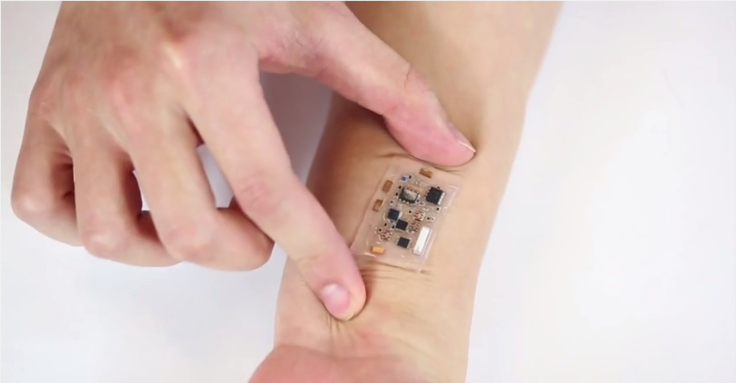Best Fitness Tracker Innovation? Stick-On Skin Patch Wirelessly Sends Vital Signs To Your Computer Or Phone

Imagine a clear patch as soft as human skin that can stick to your arm and relay important information about your health straight to your cell phone or computer. It sounds like the future, but the fitness tracker is a reality.
Just larger than a postage stamp and flexible like rubber, while soft like skin, the skin-mounted sensor is the brainchild of Northwestern University and University of Illinois researchers. The stick-on patch is designed to maximize comfort, which is to say it’s forgettable. The problem with conventional monitors is that they’re bulky, and any stress test results may be inaccurate because while wearing it, the person was, well, stressed. The new sensor is designed to let people live as if it weren’t even there.
The crucial feature that sets it apart is the ability to send information as it happens. "What is very important about this device is it is wirelessly powered and can send high-quality data about the human body to a computer, in real time,” explained Northwestern professor, Yonggang Huang, to Medical News Today. Huang added that the device is meant to be worn 24/7 without getting the way of people’s normal activities.
No wires or tape are used to keep the patch in place. They’re built similar to temporary tattoos, which can be easily applied onto the surface of the skin. The patches are actually thin elastic envelopes of fluid, suspending the internal components between the surfaces. This allows the patch to bend and twist, without snapping the internal hardware. In tests comparing the patch to standard electrocardiogram heart activity and electroencephalography brain activity monitors, they found the patches worked just as well, but with none of the discomfort.
"If you have these skin-mounted devices and an ability to locate them on multiple parts of the body, you can get a much deeper and richer set of information than would be possible with devices that are not well coupled with the skin,” said John A. Rogers, a professor at the University of Illinois and co-leader of the device’s research.
Rogers and Huang believe the next step is developing wearable patches that can detect fine motor movements. These would open doors for Parkinson’s research and other disorders characterized by frequent, discreet signals — even before patients realize they may have it.



























